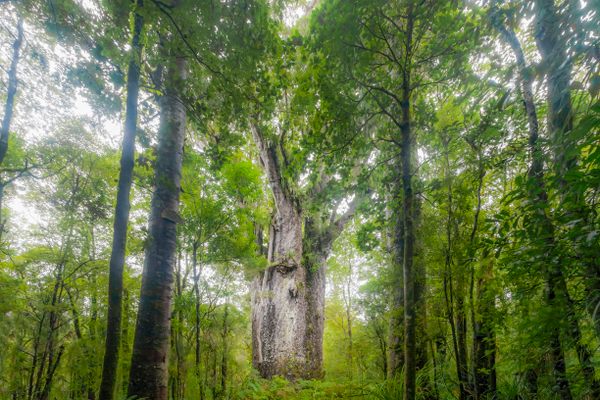Wonder Is Everywhere: Avian Love, Medieval Myths, and More From Around the Web
Get a peek into what we’re obsessed with right now.
Wonder is everywhere. That’s why, every other week, Atlas Obscura drags you down some of the rabbit holes we encounter as we search for our unusual stories. We highlight surprising finds, great writing, and inspiring stories from some of our favorite publications.

An Unexpected Avian Love Story
by Terrence McCoy, Washington Post
For more than two decades, Romeo and Julieta have met each day at the edge of the aviary in the Rio de Janeiro Zoological Garden. Romeo, a yellow-and-blue macaw, lives in the enclosure; Julieta, the only wild macaw seen in Rio for more than two centuries, visits her captive love to cuddle and share meals. It was love at first sight, say the zookeepers, and their romance has inspired the city.
The Myth of the Dark and Dirty Middle Ages
by Magdalena Łanuszka, JSTOR Daily
Forget everything you think you know about daily life in medieval Europe. The art and literature of the time show a clean and colorful epoch that prized bathing for health, relaxation, and seduction. So, where did our popular misconceptions of filth come from?
Have Scientists Finally Discovered a Hammerhead Shark Nursery?
by Stephen Dowling, BBC Future
The lives of great hammerhead sharks have long been a mystery to scientists. The locations of their nursing grounds—where these predators breed and give birth to their young—have been particularly elusive. Now researchers think they’ve found a shark nursery in a very unexpected place: Biscayne Bay, near Miami, one of the busiest fishing spots in the world.
Building a Million Flood-Resilient Homes in Pakistan
by Amy Frearson, Dezeen
After 33 million people lost their homes to extreme flooding in Pakistan in 2022, architect Yasmeen Lari announced a plan to build a million new homes from locally available bamboo, earth, and lime—a climate-conscious approach to rebuilding devastated communities. To date, 333,000 homes have been constructed.


How Did Egyptian Artifacts End Up Buried in Scotland?
by Sascha Pare, LiveScience
In 1952, a boy found a 4,000-year-old Egyptian statue buried on the grounds of a 17th-century Scottish estate. Over the next three decades, 17 more out-of-place artifacts were unearthed on the same property. Now archaeologists think they can finally explain the mystery of how these pieces of history found their way from Egypt to Scotland, and then were lost again.
A Golden Mole, Presumed Extinct, Is Rediscovered in South Africa
by Gerald Imray, Associated Press
It has been more than 80 years since anyone has seen a De Winton’s golden mole—a blind burrower with an iridescent coat and the ability to “swim” through sand dunes, near Port Nolloth on the northwestern coast of South Africa. Scientists who believed the mole might still survive employed sniffer dogs and DNA analysis to find the elusive creatures.

Remember the Fisher Price Corn-Popper?
by Ben Hooper, UPI
Four iconic toys have been added to the National Toy Hall of Fame at the Strong National Museum of Play in Rochester, New York. This year’s honorees: baseball cards, Cabbage Patch Kids, Nerf, and the Fisher Price Corn-Popper—a colorful toy that helps toddlers learn to walk and has been in production since 1957.
The Dark Hedges Are Getting Lighter
by Jenny Gross, The New York Times
Six of the twisted beech trees of the Dark Hedges—one of the most photographed locations in County Antrim, Northern Ireland, thanks to its use as a location in Game of Thrones—are being cut down due to their poor condition, and the health of another five trees is in question. Centuries ago, approximately 150 beeches lined the lane; after the current work is completed, about 80 will remain.









































Follow us on Twitter to get the latest on the world's hidden wonders.
Like us on Facebook to get the latest on the world's hidden wonders.
Follow us on Twitter Like us on Facebook